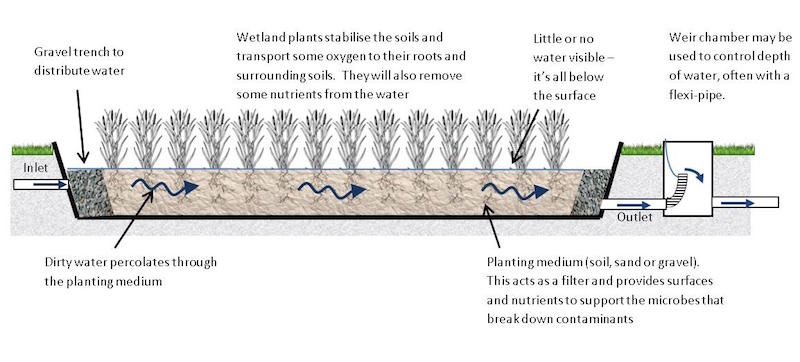
These wetlands are planted in a porous medium, typically soil, sand or gravel. They are designed to allow effluent to stay below the surface of the soil, so that it is treated by physical, biological and chemical processes supported by the roots of the plants and the media itself. The plants transfer some oxygen into the medium close to their roots, though there are many oxygen-depleted areas in the medium too.
These systems tend to be more expensive to build than Free Water Surface wetlands, because the planting medium will often need to be brought to site from elsewhere. They are often used to carry out chemical transformations where low oxygen is needed (eg de-nitrification - removal of nitrate), or where physical or chemical reactions with the media are important. They can also be useful for applications where it is desirable to avoid standing water (strong smelling effluents), or for effluents that are harmful to the stems and leaves of plants. Chemical reactions that are limited by the presence of oxygen will often be slower in this sort of wetland.
Over time, some subsurface flow wetlands may become blocked with particles in the water or microbial growth, reducing their life-span. It is possible to design against this, by pre-treating effluent or increasing the size of the wetland however some operators choose to accept a finite life- span for the wetland at a smaller build cost, budgeting to replace the medium as a maintenance activity.